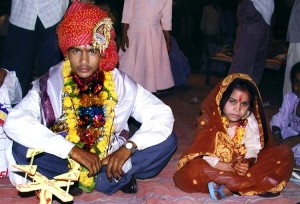As per the definition given by UNICEF, child marriage is the formal marriage or informal union entered into by an individual before reaching the age of eighteen. It is, internationally, considered as a violation of human rights. Though it is observed for both the genders, the majority of the affected population is female due to the importance placed upon female virginity. Some major factors behind this menace are poverty, cultural traditions, bride-price, religious and regional customs, social pressure, illiteracy, the perceived inability of women to work for money, etc.

Child marriage is still practiced in many countries but its prevalence in India is alarming. Although child marriage has been made illegal in the Indian law, the country is home to more than one-third of the child brides in the world. According to UNICEF, 47% of girls are married by 18 years of age, and 18% are married by 15 years of age. These marriages are often performed without the consent of the girls. The worst affected states are Andhra Pradesh, Bihar, Madhya Pradesh, Rajasthan, and Uttar Pradesh. According to the 2001 census, there are 1.5 million girls in India under the age of 15, already married. Of these, 20% or approximately 300,000 are mothers to at least one child. The 2001 census also estimated the average age of marriage has risen to 18.3 for females. The male average is 22.6 years.
Because of the early and often closely timed pregnancies before their bodies are able to handle the stress of pregnancy, adolescent mothers give birth prematurely or to low weight babies. The health of the child and mother are at risk and often they do not survive. Child marriage also makes girls more vulnerable to domestic violence, sexual abuse and inability to complete primary education. It is also found that infant mortality rates are higher than the national average in the states where child marriage is highly prevalent.
Child marriage has grave implications for population control as well, as brides are likely to have high fertility and numerous unwanted pregnancies. States where child marriage is most prevalent are also the ones with the highest population.
With the enactment of laws such as The Child Marriage Restraint Act 1929, The Prohibition of Child Marriage Act 2006 and increasing literacy and awareness among people, the numbers have gone down in the recent years, but we still have a long way to go.
3 thoughts on “Glaring statistics of Child marriage in India”